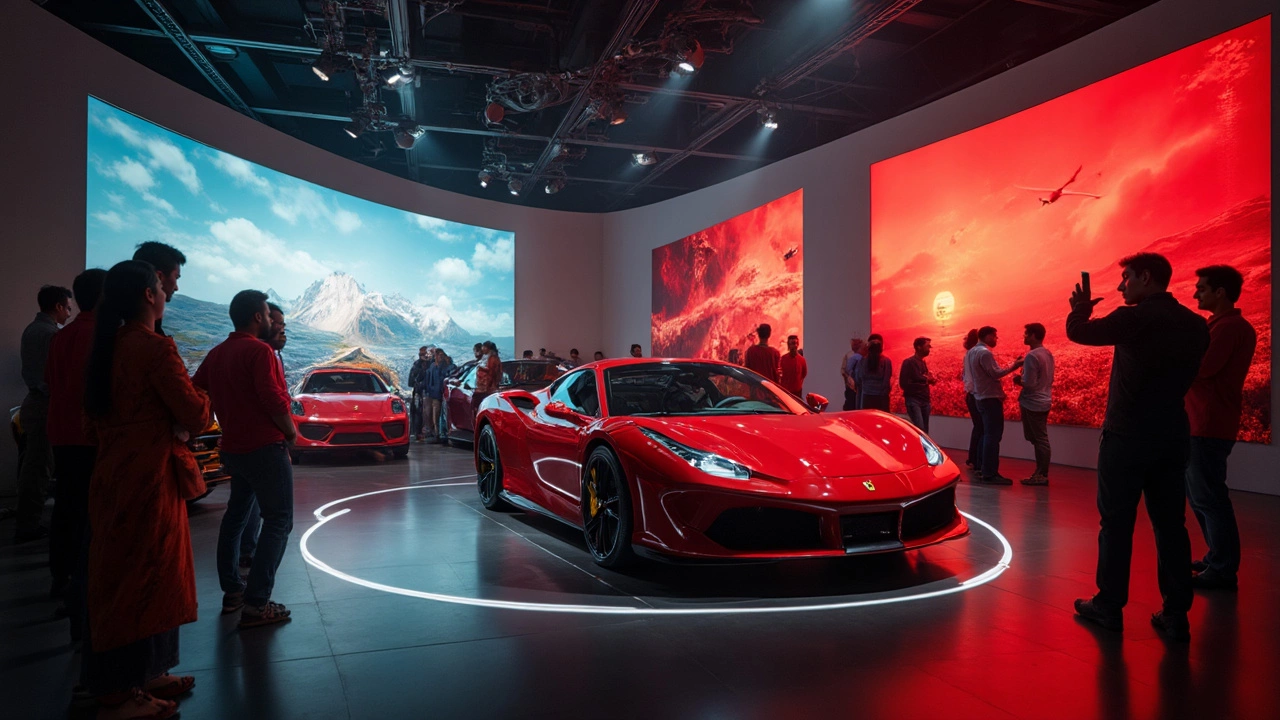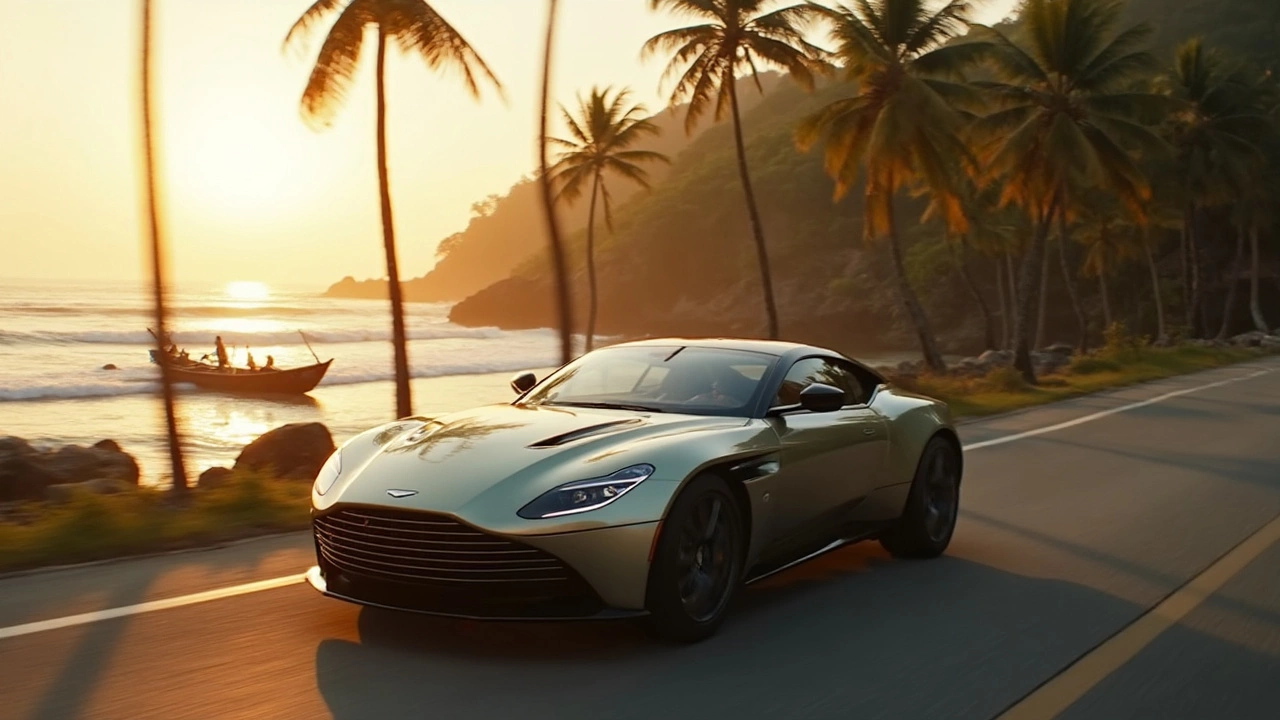India’s car scene is a whirlwind of makes and models, but guess what? Not everything is made here. While domestic giants like Tata and Mahindra dominate, and international biggies such as Hyundai and Suzuki have production lines, some big names are missing in action. We're talking about the luxury and the insanely fast wheels that petrolheads dream of.
Take Tesla, for instance. While there’s buzz about its potential entry, it's still not manufacturing in India. Same goes for Ferrari and Rolls-Royce. These brands are here through dealerships but remain import-only. So, if you're eyeing an Aston Martin, brace yourself. It’s coming from way across the waters.
Why not build here? Part of it has to do with luxury segments being niche markets in India. The costs of setting up full-fledged manufacturing might outweigh benefits for these brands. Plus, import duties are no joke, which significantly hypes up the price tag compared to locally made models.
- The Global Brands Missing in India
- The Reason Behind Absence
- The Impact on Indian Car Buyers
- What's Hot and What's Not
- The Future of Car Manufacturing in India
The Global Brands Missing in India
India's car industry might be big, but not every auto giant has a local address here. Some brands prefer to stay outside the manufacturing landscape. Let's check out who’s missing.
Tesla
First up, Tesla. There's been endless chatter about Tesla’s entry into India. Despite electric cars gaining traction and the government nudging towards greener tech, Tesla hasn't hit the assembly line here. The reasons are varied, including import taxes and regulatory hurdles. So, for now, if you want a Tesla, get ready for an import adventure.
Luxury and Supercars
Dreaming about a Ferrari, Lamborghini, or Aston Martin? Don't count on finding a factory for these in India. The luxury market in India is still growing. Hence, brands like Ferrari and Rolls-Royce remain out of local production lines. Import duties make these cars pricier than ever, but demand stays steady among enthusiasts.
European Luxury
What about iconic names like Bugatti and Maserati? Just like their supercar cousins, they’re missing from the local scene. Even without local production, their brand allure speaks volumes.
Why The Absence?
So, why don’t these brands jump into the Indian pool? It boils down to a few factors.
- Luxury Segment: It's still a smaller slice of the market. Setting up extensive manufacturing for limited cars isn't viable yet.
- High Import Duties: Costs and taxes hike up the prices, but for these brands, exclusivity isn’t just about money.
- Local Regulations: Navigating India's complex policy landscape is another challenge.
Here’s a look at a rough table of import duties, to give you an idea:
| Car Category | Import Duty |
|---|---|
| Basic Passenger Cars | 60% |
| Luxury Vehicles | 100%-125% |
High import duties make these cars exclusive, appealing to the luxury-seeking elite despite the absence of local manufacturing.
The Reason Behind Absence
So why don’t some of these global giants manufacture cars in India? There’s quite a mix of reasons, and it’s not just about the numbers.
Cost Considerations
Setting up a plant isn’t pocket change. The initial investment for establishing manufacturing units can be massive. Brands like Ferrari and Rolls-Royce weigh the pros and cons, and often they find that India’s market size for luxury vehicles doesn’t justify the expense. Even mainstream brands like Tesla, known for their innovation and electric charm, must consider these financial hurdles.
Import Duties
India slaps on some pretty hefty import duties for bringing in luxury vehicles. These duties can peak at around 100% or more, effectively doubling the price of a vehicle sold domestically. For companies, this provides a tricky decision: absorb the cost or pass it on to buyers. Since many of these brands cater to the affluent segment, they often opt to continue just importing rather than setting up shop locally.
Market Demand
Another factor is simply the demand. While there’s a growing number of affluent car enthusiasts in India, the overall market size for ultra-luxury and high-performance cars is still niche compared to other countries. Companies like Aston Martin don’t see enough volume to justify building a dedicated manufacturing plant.
Regulatory Challenges
Navigating through India's regulatory framework can also present challenges. From environmental regulations to labor laws, establishing a manufacturing operation requires aligning with numerous local compliances. For brands like Tesla, which are pushing for sustainable production processes, these can be significant roadblocks.
Statistics Snapshot
Here are some quick numbers:
| Brand | Import Duty Impact |
|---|---|
| Ferrari | Price doubles due to duties |
| Tesla | High cost compared to expected EV demand |
So, while these unavailable cars in India do make headlines when imported, their absence in local manufacturing is a calculated business decision, juggling costs, demand, and regulations.

The Impact on Indian Car Buyers
So, you're a car enthusiast in India with your eyes set on brands like Ferrari or Tesla? Well, knowing that these cars are not made in India is kind of a big deal. Why? Because it plays a huge role in how much you’ll be shelling out.
Cost Implications
Since these premium brands don't manufacture here, any purchase involves hefty import duties. We’re talking about taxes anywhere between 100% to 125%, effectively doubling the sticker price. This makes luxury cars a status symbol simply due to their rarity and elevated costs.
Availability and Wait Times
Then there’s the wait time. Buying an imported car means dealing with longer delivery periods. Some high-demand models could take months to arrive, thanks to global shipping and bureaucracy. Meanwhile, locally produced cars often have a much faster turnaround, meaning less time waiting and more time driving.
Servicing and Maintenance
No local manufacturing also translates to limited service centers and more expensive spare parts. If you own a Tesla, finding someone who can handle complex tech issues could be a chase across city lines. This can be both a hassle and an extra cost.
| Aspect | India | Imported |
|---|---|---|
| Price Increase (Duties) | 0% | 100% to 125% |
| Wait Time | Short | Long |
| Service Availability | High | Limited |
Turning the Tables
However, for the ones who can afford it, having a ride that’s not mass-produced is a different level of flex. Plus, models like Bugatti can get you into exclusive clubs and car enthusiast circles.
Ultimately, understanding these factors can help you make way more informed decisions. If you’re okay with the added wait and cost, and love the exclusivity, go for that luxury import. Otherwise, there are plenty of fantastic locally made options in India’s ever-growing auto market.
What's Hot and What's Not
So, what's making waves in the Indian auto scene? Well, local manufacturing is ruled by the likes of Maruti Suzuki, Hyundai, and Tata Motors. These brands offer models like the Maruti Suzuki Swift and Hyundai Creta, which are household names across the subcontinent. They aren't just popular; they resonate with the practical and budget-focused Indian market.
However, look beyond the usual suspects, and things get interesting. Brands like Mahindra and Kia are also on the rise. Mahindra XUV700 and Kia Seltos are pretty hot right now, offering a blend of features and affordability that's hard to beat.
On the flip side, cars not made in India like Tesla's Model S and Model X capture attention but are seen more as luxury items due to their high import taxes. Driving a Ferrari or an Aston Martin is mostly for the ultra-rich. It’s not because they lack interest in the Indian market, but the setup costs, plus India's unique road challenges and market dynamics, don't make it easy for them to justify local production.
Where's the Market Heading?
While luxury brands weigh their options, the electric vehicle (EV) segment is heating up. Local players like Tata Motors are pushing EVs like the Nexon EV, making clean-energy cars more accessible. Even though international EV giants like Tesla aren't yet manufacturing in India, the groundwork is being laid.
In a nutshell, the Indian car market is bustling with activity, especially for cars within the economical to mid-range segment. Meanwhile, the unattainable luxury models remain mostly for those willing to import and shell out big bucks. Who knows, in the coming years, if production costs and policies align, we might see more luxury brands driving the Indian manufacturing roads!

The Future of Car Manufacturing in India
When it comes to the future of car manufacturing, India is gearing up for some exciting shifts. You might wonder, with so many brands already here, what’s next on the horizon? Well, buckle up!
Electric cars are no longer just a whisper on the wind; they're roaring to life. India’s gearing toward more sustainable transport, and with the government pushing for greener alternatives, we might see more electric car companies diving in. The ambition is clear: reduce dependency on fossil fuels and cut emissions, and manufacturers know this is the new gold rush.
Rise of Electric Wheels
Brands like Tata Motors and Mahindra have already started rolling out electric models. And with the government’s incentive schemes, it’s expected that more players, maybe even some absent big guns, will join the scene. Rumors about Tesla setting up shop are sparking curiosity and excitement.
Tech and Innovation
India isn't shying away from adopting the latest tech in automobile manufacturing. Automation, AI integration, and advanced energy solutions are being looked into. The country is gradually becoming a playground for innovation, not just in manufacturing techniques but in the cars themselves.
Potential Market Shifts
With the median income rising and a burgeoning middle class, there’s more room for premium brands to consider localized production if the economics work out. Who knows? Maybe someday, dream models like Ferraris and Aston Martins will gently purr off an Indian assembly line. And don’t be surprised if you see more collaborations between Indian manufacturers and global tech firms.
In terms of numbers, consider this: the Indian automobile industry aims to contribute around 12% to GDP over the next decade. That’s a clear indicator of growth ambitions and making India a manufacturing hub for unavailable cars today.
The future seems bright and noisy with potential, kinda like a bustling bazaar of opportunities. Whether you’re a buyer, seller, or just automotive-curious, keep your eyes peeled, because the drive forward is going to be an electrifying journey.





Write a comment